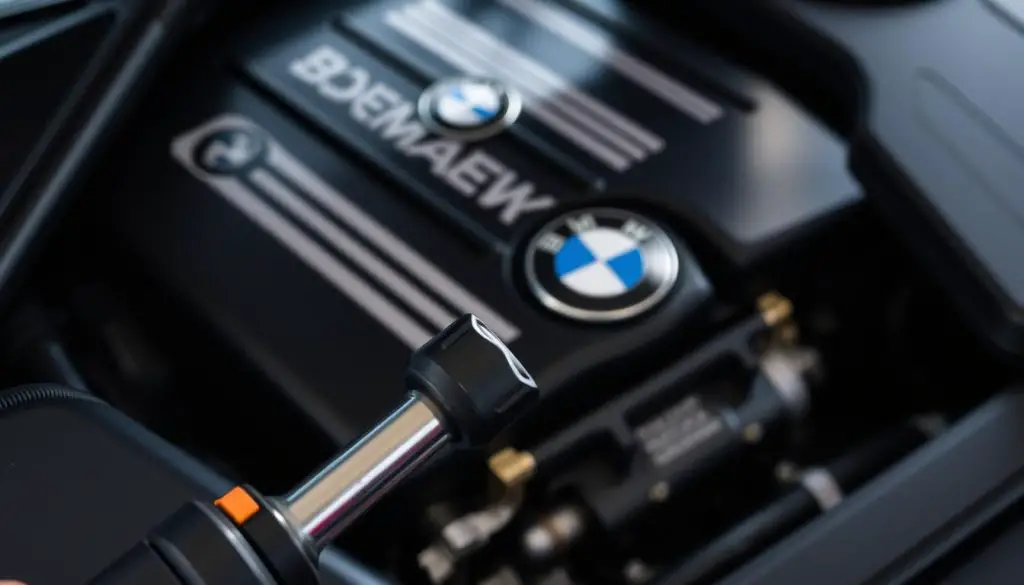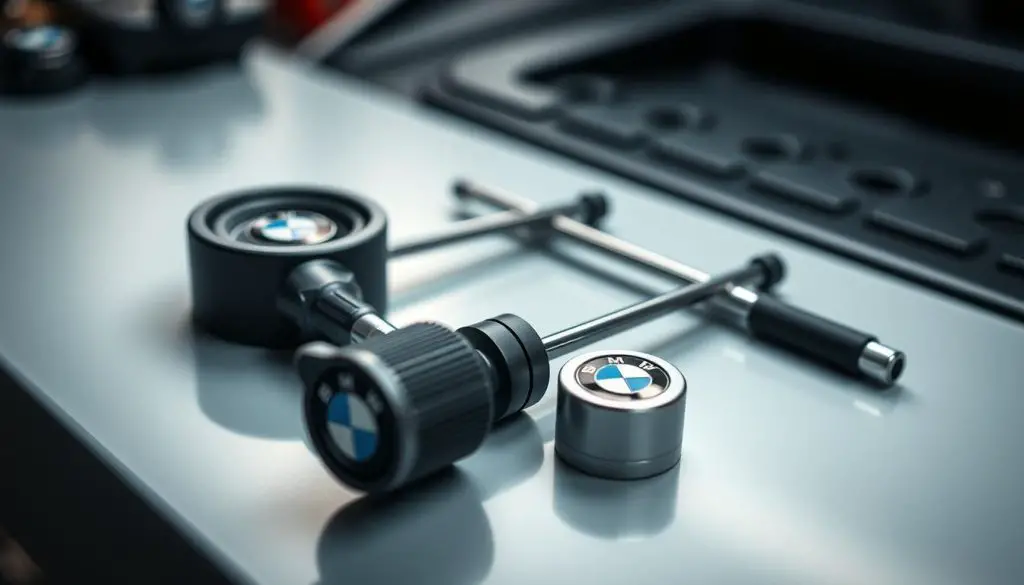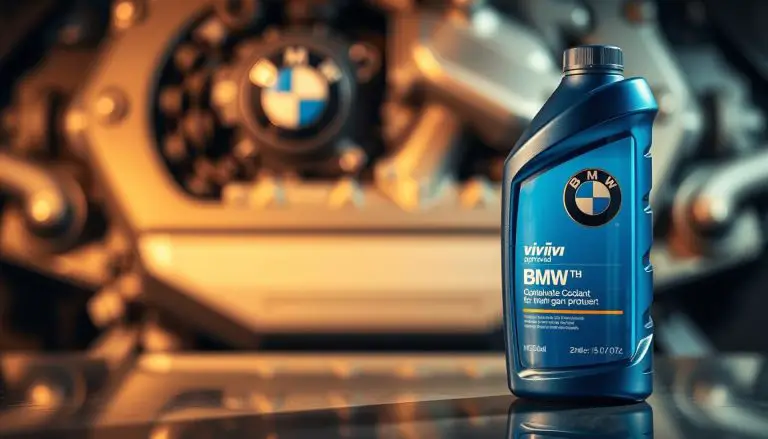Maintaining the optimal oil level is paramount for the longevity and performance of your BMW. Regularly checking the oil level using the dipstick is a straightforward method to ensure your vehicle’s engine remains well-lubricated. This guide will elucidate the steps to accurately check your BMW’s oil level, aiding in the identification of any potential issues before they escalate into major problems.
Proper utilization of the dipstick is critical for obtaining an accurate reading. In the subsequent sections, we will explore the specifics of locating the dipstick, interpreting the oil level readings, and deciphering the significance of the various markings on the dipstick.
Key Takeaways
- Regularly checking your BMW’s oil level is vital for engine health.
- The dipstick is a simple tool for monitoring oil levels.
- Understanding dipstick markings is crucial for accurate readings.
- Low oil levels can lead to serious engine damage.
- Proper maintenance can extend the life of your BMW.
Understanding the Importance of Proper Oil Levels in BMWs
The significance of maintaining the appropriate oil level in your BMW is paramount, as it directly influences engine performance. Engine oil is indispensable for lubricating moving parts, cooling engine components, and preventing corrosion. An incorrect oil level can lead to a decline in your BMW’s engine efficiency and potentially catastrophic damage.

How Oil Affects BMW Engine Performance
Oil’s role in lubricating the engine’s moving parts is critical, as it reduces friction and wear. It also aids in cooling the engine by transferring heat away from critical components. Engine oil further assists in cleaning the engine by carrying away contaminants and debris. Thus, maintaining the correct oil level is essential for optimal BMW engine performance and longevity.
Consequences of Incorrect Oil Levels in BMW Engines
Operating your BMW with insufficient oil can result in increased friction, overheating, and potentially engine seizure. In contrast, overfilling can cause foaming, reduced lubrication efficiency, and increased pressure on engine seals. Both scenarios can lead to expensive repairs and a diminished engine lifespan. BMW experts underscore the importance of regular oil level checks to prevent such issues and ensure your vehicle’s smooth operation.
Tools and Materials Needed
The task of verifying your BMW’s oil level necessitates a collection of basic yet indispensable tools. Possessing these items beforehand will streamline the process, enhancing both efficiency and effectiveness.
Essential Items for Checking BMW Oil
The cornerstone of this endeavor is the dipstick, instrumental in gauging the oil’s level. Concurrently, a clean rag or paper towel is imperative for the purpose of wiping the dipstick, ensuring an accurate reading.
Optional Tools That Make the Job Easier
Though not obligatory, the inclusion of a funnel proves advantageous during the oil addition process. An oil drain pan is also beneficial, should you intend to undertake an oil change. These supplementary tools significantly facilitate the maintenance task.

Preparing Your BMW for an Oil Level Check
Initiating the process of oil level assessment in your BMW necessitates a preparatory phase, aimed at achieving an accurate measurement. This preparatory stage encompasses several critical actions, designed to facilitate a precise outcome.
Finding the Right Location
Position your BMW on a flat, stable terrain. This precaution is imperative, as an uneven surface can distort the oil level reading. It is essential to confirm the surface’s levelness and firmness.
Engine Temperature Considerations
The engine’s temperature is a pivotal factor in obtaining an accurate oil level reading. It is advisable to conduct the oil level check when the engine is in a cold state or has been shut off for a few minutes. Checking the oil level when the engine is hot can result in unreliable readings.
Ensuring Vehicle Is Level
Ensure your BMW is positioned on a level surface. An uneven surface can cause the oil to move, leading to an incorrect reading on the dipstick. To confirm the vehicle’s levelness, take multiple readings and verify that the oil level remains consistent.
How to Check BMW Oil Level with Dipstick: Step-by-Step Guide
Ensuring the health of your BMW’s engine necessitates the regular inspection of oil levels via the dipstick. This comprehensive guide will elucidate the precise methodology for ascertaining your BMW’s oil level with utmost accuracy.
Locating the Dipstick in Different BMW Models
The dipstick’s position varies across BMW models. It is generally situated beneath the hood, marked with “Oil” or an oil can icon. For precise locations, refer to your BMW’s owner’s manual or seek a diagrammatic representation.
Proper Dipstick Removal Technique
Extraction of the dipstick necessitates a slow and steady pull. Vigilance is paramount to avoid oil spillage. If the dipstick appears resistant, refrain from applying force, as this could potentially harm the dipstick or adjacent components.
Reading the Oil Level Correctly
Following dipstick removal, employ a lint-free cloth or paper towel to clean it. Subsequently, insert the dipstick fully and withdraw it once more. The oil level will be denoted by min and max indicators on the dipstick. Verify that the level falls within these parameters.
- Ensure the vehicle is on a level surface.
- Conduct the oil level check when the engine is cold or has been turned off for a few minutes.
- Consult your owner’s manual for the correct procedure tailored to your specific BMW model.
Reinserting the Dipstick Properly
Post-oil level inspection, ensure the dipstick is fully reinserted to guarantee proper seating. This measure is crucial to avert potential issues with the dipstick or engine.
Adherence to these guidelines will empower you to accurately gauge your BMW’s oil level via the dipstick, thus contributing to the vehicle’s sustained performance and longevity.
Interpreting Your Oil Level Results
Accurate interpretation of oil level results is paramount for the uninterrupted operation of your BMW engine. Post-dipstick oil level assessment, grasping the implications of the reading is essential for the preservation of your vehicle’s longevity.
Understanding the Min/Max Markings on BMW Dipsticks
The dipstick within your BMW delineates Min and Max thresholds. These demarcations signify the permissible oil level spectrum. The oil level must reside between these extremities. A reading below the Min mark signifies insufficient lubrication, whereas a level surpassing the Max mark indicates overabundance.
| Oil Level Status | Indication | Action Required |
|---|---|---|
| Below Min Mark | Low Oil Level | Add Oil |
| Between Min and Max | Optimal Level | No Action Needed |
| Above Max Mark | High Oil Level | Drain Excess Oil |
What to Do If Oil Level Is Too Low
Should the oil level dip below the Min mark, immediate oil replenishment is imperative. Utilizing the correct oil type for your BMW, as detailed in the owner’s manual, is non-negotiable. This action prevents potential engine damage stemming from inadequate lubrication.
What to Do If Oil Level Is Too High
An oil level exceeding the Max mark signifies overfilling, a condition that can inflict as much harm as underfilling. Excess oil necessitates its removal to restore the level to the recommended range. Engaging a professional mechanic for this procedure is advisable.
BMW Oil Quality Assessment
Evaluating the quality of your BMW’s oil is paramount for sustaining its performance and longevity. The oil within your vehicle is instrumental in lubricating the engine, managing temperature, and averting corrosion.
Assessing Oil Color and Consistency
The hue and viscosity of your BMW’s oil offer significant insights into its state. Fresh oil typically exhibits a light amber hue. As it becomes contaminated, it gradually darkens. Observing the oil’s color and viscosity can elucidate its efficacy.
- Clean oil is generally light brown or amber.
- Dirty oil appears dark brown or black.
- Oil with a milky appearance may indicate coolant contamination.
BMW-Specific Oil Requirements
BMW vehicles necessitate specific types of oil that adhere to their rigorous performance benchmarks. Utilizing the correct oil is critical for preserving your vehicle’s warranty and ensuring peak engine performance. BMW advocates for the use of synthetic oil that meets their specifications.
Signs That Indicate Oil Needs Changing
Several indicators suggest that your BMW’s oil necessitates a change. These include:
- Dark or black oil color.
- Visible contamination or debris.
- Increased engine noise or performance issues.
Troubleshooting Common BMW Oil Check Issues
Several common problems can arise when checking your BMW’s oil level, and knowing how to troubleshoot them is crucial. Issues such as dipstick problems in older models or confusion between electronic oil level monitors and traditional dipsticks can complicate the process.
Dealing with Dipstick Problems in Older BMW Models
Older BMW models may have dipsticks that are prone to wear and tear, leading to inaccurate readings. To address this, inspect the dipstick regularly for signs of damage or corrosion. If you notice any issues, consider replacing the dipstick to ensure accurate oil level readings.
- Check for signs of physical damage
- Look for corrosion or rust
- Ensure the dipstick is properly seated
Understanding Electronic Oil Level Monitors vs. Dipsticks
Some modern BMWs come equipped with electronic oil level monitors, while others still use traditional dipsticks. Understanding the difference between these two systems is essential for accurate oil level checks. Electronic monitors provide real-time data, while dipsticks require manual checks.
When using electronic oil level monitors, ensure that the system is functioning correctly by checking for any error messages on your dashboard. For dipsticks, follow the manufacturer’s guidelines for checking the oil level.
When to Consult a BMW Specialist
If you’re unsure about the accuracy of your oil level readings or encounter persistent issues with your dipstick or electronic monitor, it’s time to consult a BMW specialist. They can provide expert advice and diagnose any underlying problems with your vehicle’s engine or oil monitoring system.
- If you notice inconsistent readings
- If your dashboard displays an error message related to oil levels
- If you’re unsure about how to interpret the results
Conclusion
Ensuring the regular inspection of your BMW’s oil level is paramount for sustaining its operational efficacy and longevity. The preceding sections have elucidated the importance of accurately utilizing the dipstick, deciphering its readings, and evaluating oil quality as fundamental BMW maintenance tips. These practices are indispensable for maintaining your vehicle’s optimal performance.
Adherence to the methodologies outlined in this discourse guarantees the continuous lubrication of your BMW’s engine, thus mitigating potential damage and preserving its operational efficiency. This elementary yet critical car care regimen significantly influences your vehicle’s overall health and performance.
In conclusion, the act of checking your BMW’s oil level via a dipstick is a straightforward yet meticulous process. It necessitates a thorough understanding of your vehicle’s specific requirements. By integrating this practice into your routine BMW maintenance tips, you can extend the lifespan of your engine and ensure your BMW operates at its peak performance.
FAQ
How often should I check my BMW’s oil level?
Regular inspection of your BMW’s oil level is imperative, with a minimum frequency of once monthly. This routine is crucial, notably before embarking on extended journeys, to maintain the optimal lubrication of your engine.
What type of oil does my BMW require?
The precise oil specification for your BMW is contingent upon its model and year of manufacture. For accurate identification, refer to your vehicle’s owner’s manual or seek consultation from a BMW specialist.
Can I use synthetic oil in my BMW?
Many BMW models necessitate the use of synthetic oil. To confirm compatibility, consult your owner’s manual or seek verification from a BMW specialist.
What are the consequences of driving with low oil levels in my BMW?
Neglecting to maintain adequate oil levels can precipitate severe engine damage, diminish performance, and potentially incur substantial repair costs.
How do I know if my BMW’s oil level is too high?
Utilize the Min/Max markings on your dipstick to gauge the oil level. Exceeding the Max mark indicates an overfill. In such instances, consult a BMW specialist for appropriate guidance.
Can I check my BMW’s oil level when the engine is hot?
Optimal oil level assessment is achieved when the engine is cold or has been shut off for a few minutes. Engaging in this check when the engine is hot can yield inaccurate readings.
What should I do if I find that my BMW’s oil level is too low?
In the event of an oil level deficiency, replenish with the recommended oil type to restore the correct level. Concurrently, inspect for any signs of leaks to avert future complications.
How do I assess the quality of my BMW’s oil?
Evaluate the oil’s color and consistency. A dark or contaminated appearance may indicate the need for oil replacement. For definitive guidance, consult a BMW specialist.
Can I use an electronic oil level monitor instead of a dipstick?
Certain BMW models are equipped with electronic oil level monitors. Despite this, manual oil level verification with a dipstick is advisable to ensure precision.
What should I do if I’m unsure about checking my BMW’s oil level?
If uncertainty prevails, refer to your owner’s manual or contact a BMW specialist. They can offer personalized advice and support tailored to your specific needs.


